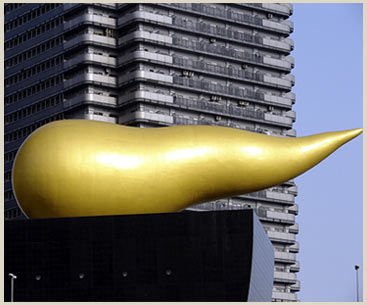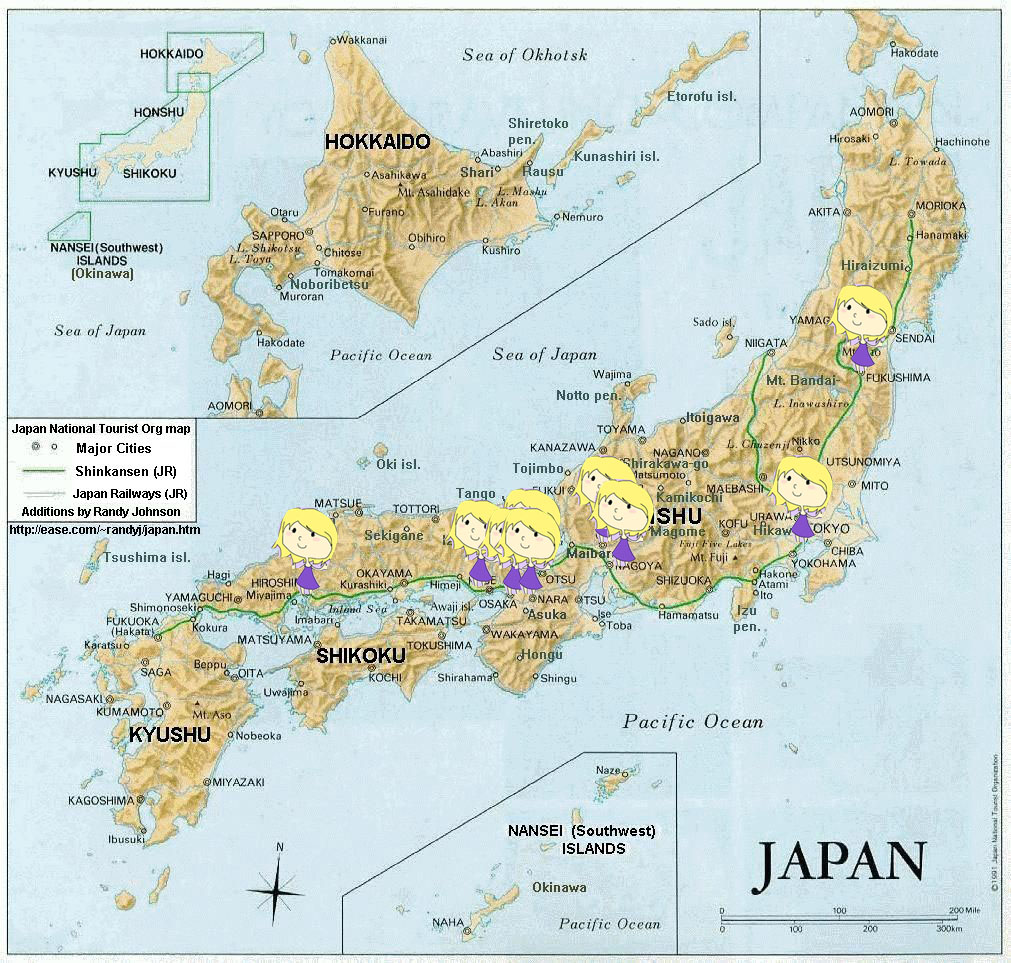I've spent a while internally debating whether this post was appropriate for
publication, and have decided it must be done. One of the most common
questions Japanese people would ask me was 'what was your biggest
culture shock when you first came to Japan?' The answer was always
'toilets'. It's not a particularly sophisticated response,
but I think most foreigners in Japan would agree. Everyone has a 'Japan
toilet story'. And for the uninitiated, using a Japanese toilet may well
end up being one of the most memorable/traumatizing experiences of your
time in Japan. I will tell you why.
 |
| The Asakusa Asahi Flame statue in Tokyo. I'll let you decide why this image is relevant. (Image source) |
1. The Seat Heating
Let's
assume your first time is on a conventional Japanese 'throne' as
opposed to the notorious squat toilets (more on them to come). You
approach the shiny white beast, trou-down, and sit. You let out an
incredulous yelp, as your cheeks experience a sudden - but not
unpleasant - glow of warmth radiating from the seat. In your own
country, the temperature of a toilet seat is usually proportional to the amount of time the previous user has spent sitting
on it, the knowledge of which is highly undesirable. In Japan, this
same sensation is recreated artificially - but it may become a guilty
pleasure. Forget walking on sunshine, you are sitting on it! And don't
it feel good?
2. The Slippery Situation
In
Japanese households, the commonly known etiquette is to remove your
shoes before entering the house, and put on a pair of slippers. But did
you know that there are also a pair of slippers especially for use in
the toilet? This is so you don't contaminate the rest of the house with
your nasty toilet-foot germs. Unfortunately, after experiencing the joy
that is the heated toilet seat, you are likely to be in a state of
euphoria that causes you to forget your footwear. Many foreigners have
had to perform the shuffle of shame back to the bog after being caught
out wearing the toilet slippers somewhere other than the toilet. Don't
let that be you.
3. The Spray Buttons
When
using a Japanese
toilet, one will likely come across an intimidating array of
buttons, each of which has a different purpose depending on the gender
and sanitary needs of the user. The most common buttons are marked
'oshiri' and 'bidet', for a bum and ladypart shower respectively. More
advanced models allow you to adjust the heat, angle, and strength of the
spray. These buttons can be problematic for the curious foreigner
who dares to test them. Many don't seem to realize that you do actually
need to be seated for it to work properly. For some reason it comes as a
shock when, upon pressing the button, a jet of toilet water shoots out
and blasts the hapless victim in the face.
 |
| Useful English instructions next to the toilet in a hotel. |
4. The Sound Princess
On the wall beside some Japanese toilets are ominous, Big Brother type speakers. These are the aptly named
otohime
or 'Sound Princess', a machine designed to drown out the embarrassing
tinkling tones of female urination. I remember when this was introduced
to me. I was a guest at an English Speaking Club meeting, held at the
teacher's house. I mentioned my bewilderment at Japanese toilets, and
she decided I should be bestowed with the honour of a demonstration of
her brand new 'Sound Princess'. The whole class followed us into the
bathroom. The teacher pressed a button, and a loud 'GURRRRRRRRRR'
reverberated around the room. I laughed. My hostess looked at
me with cool disapproval, and said, 'maybe in your country you do not
care, but we Japanese women like to go to the toilet in secret.'
Because a roaring Sound Princess is so discreet.
5. The Squat
Nothing
incites fear in a
foreigner's heart more than entering a train station or old building and
finding that the only toileting facilities available are
traditional squat toilets. First of all, it seems you need the thighs
of a rugby player and the balance of a gymnast to even think about
attempting this. Then there is the issue of what to do with your
clothes: for the novice squatter, there is nothing more precarious than a
pair of tights tangled around your ankles while in this position. I
heard a story about a girl who was so baffled by the squat toilet that
she thought it would be best to just take
all her clothes off for
safekeeping while she did her business. By all accounts it was going
well, until she dropped one of her socks in.
 |
| Documentation of the squat toilets at my high school in Hiroshima - there were no western-style toilets. |
6. The Flush
You've
navigated your way through the wonderful world of seat heaters,
slippers, Sound Princesses, spray buttons and squats. Just when you
thought it was all over, the Japanese toilet deals you another low blow -
by hiding the flush in the least conspicuous place possible. If there
is one valuable piece of advice I can offer, it it is that you should ensure you can
locate the toilet's flush
before you proceed to do anything else.
This small act could save you from potentially mortifying situations.
To share another story from a source who prefers to remain anonymous,
one time this person had to use a disabled toilet, as it was the only
one available. Unfortunately, after finishing up he realized he
couldn't distinguish the 'call assistance' button from the flush. This
user decided it wasn't worth risking it, and all he could do was put
down the lid and
run out of there, leaving his 'problem' for the next person to solve.
7. The Future
Recently, reports of new
smartphone-controlled toilets
have been circulating the internet.
The toilets, which are supposedly available in Japan this month, can be
connected to Android phones via bluetooth. The user downloads an
app that allows all the functions of the toilet to be operated with a
touch of the phone. The toilets also have inbuilt speakers, so you can
ditch the 'Sound Princess' and play your own sweet beats. The app even
contains a 'toilet diary' to record all of your bowel movements!
When it comes to your Japanese toilet experience, as the saying goes, you can't polish a turd - but in Japan you probably
can roll it in glitter. If you know which button to push.










